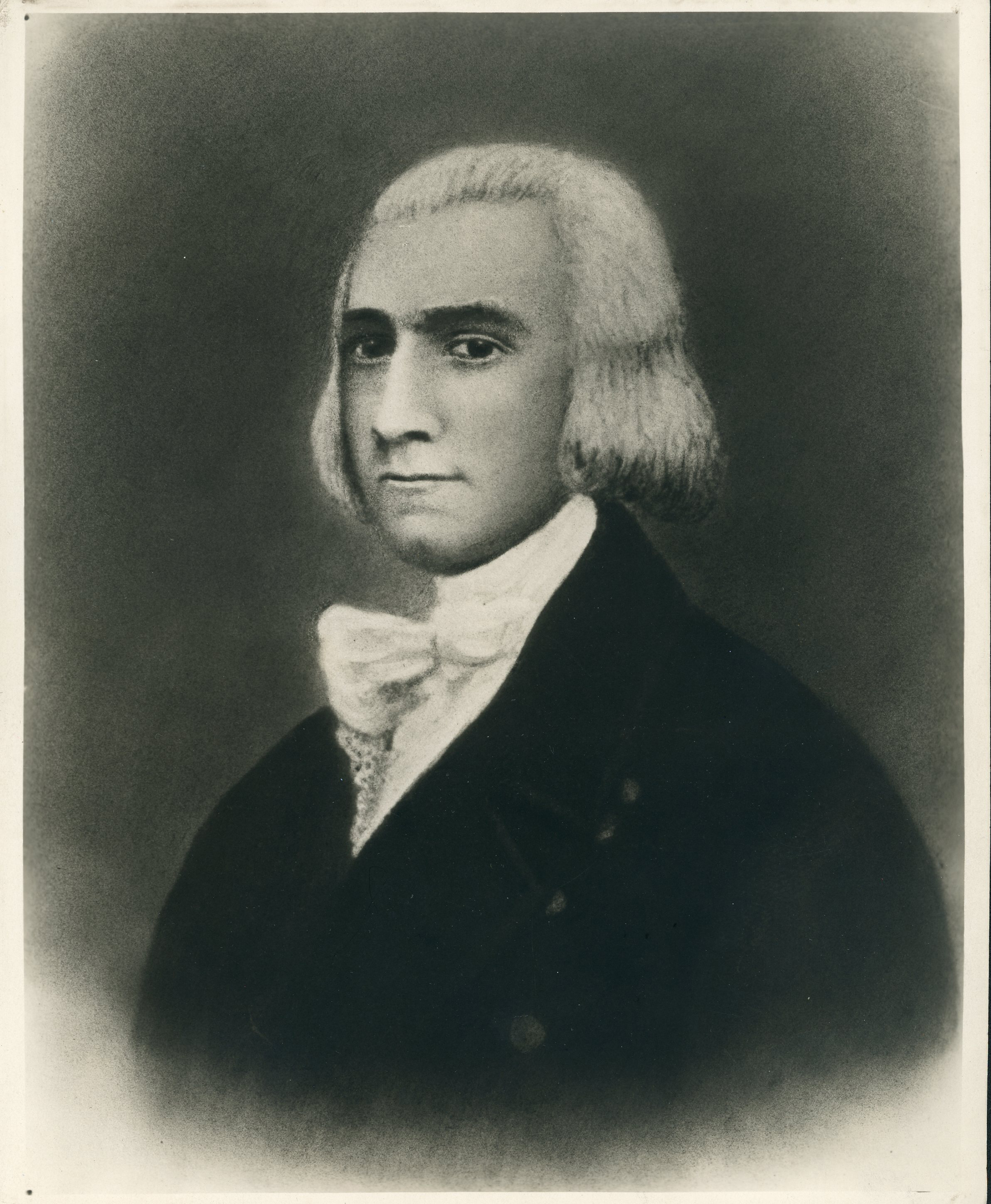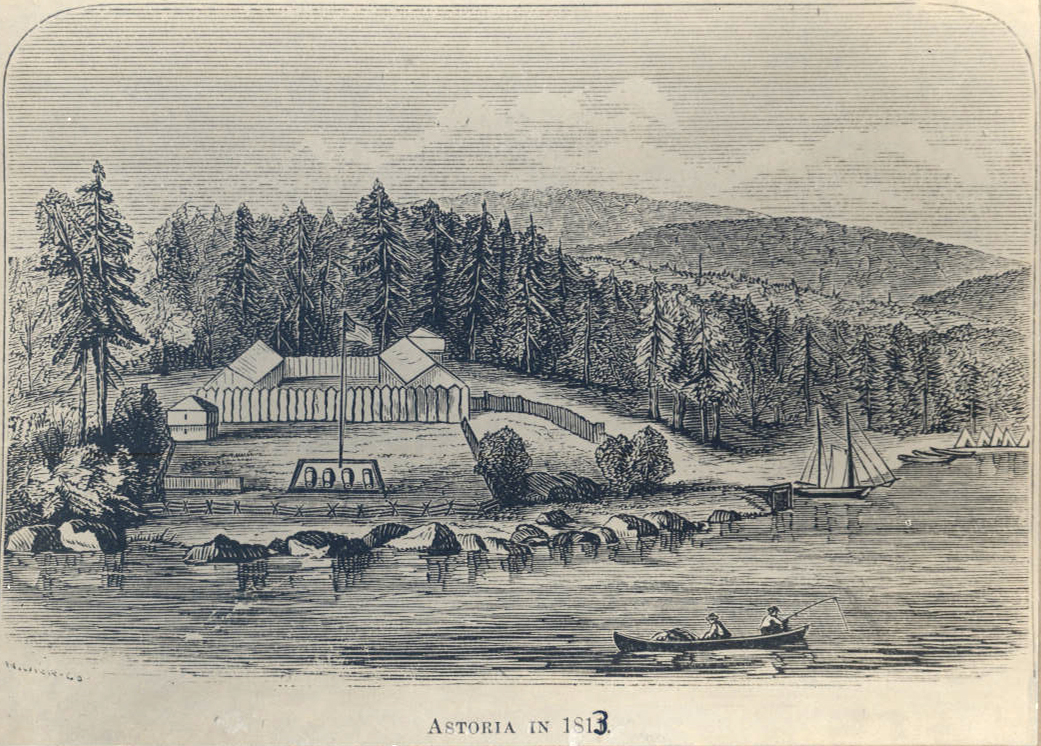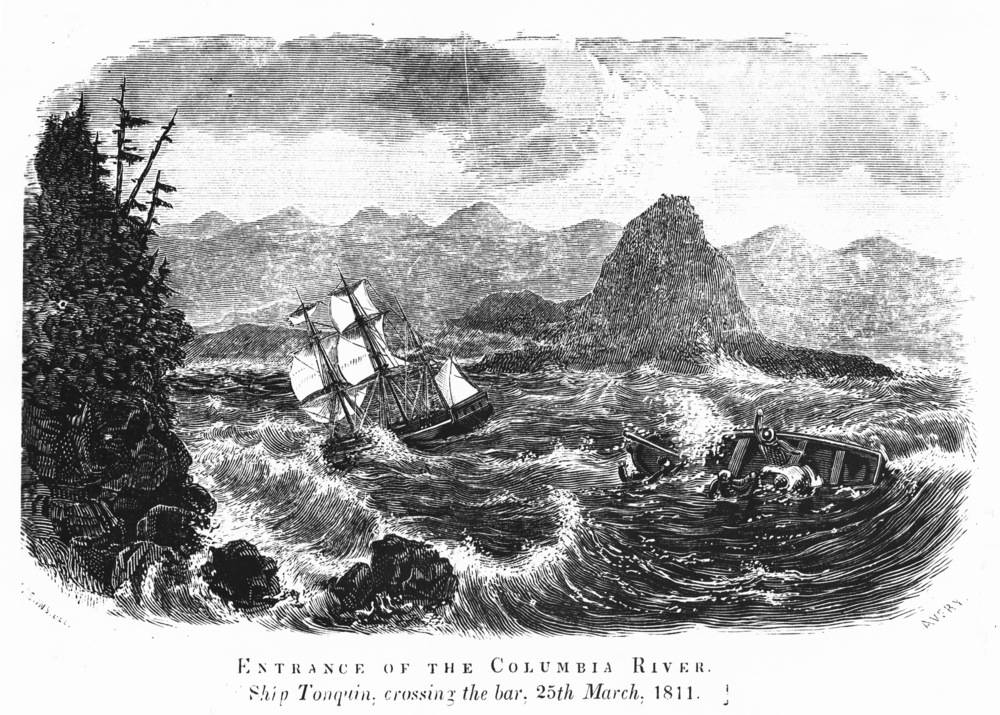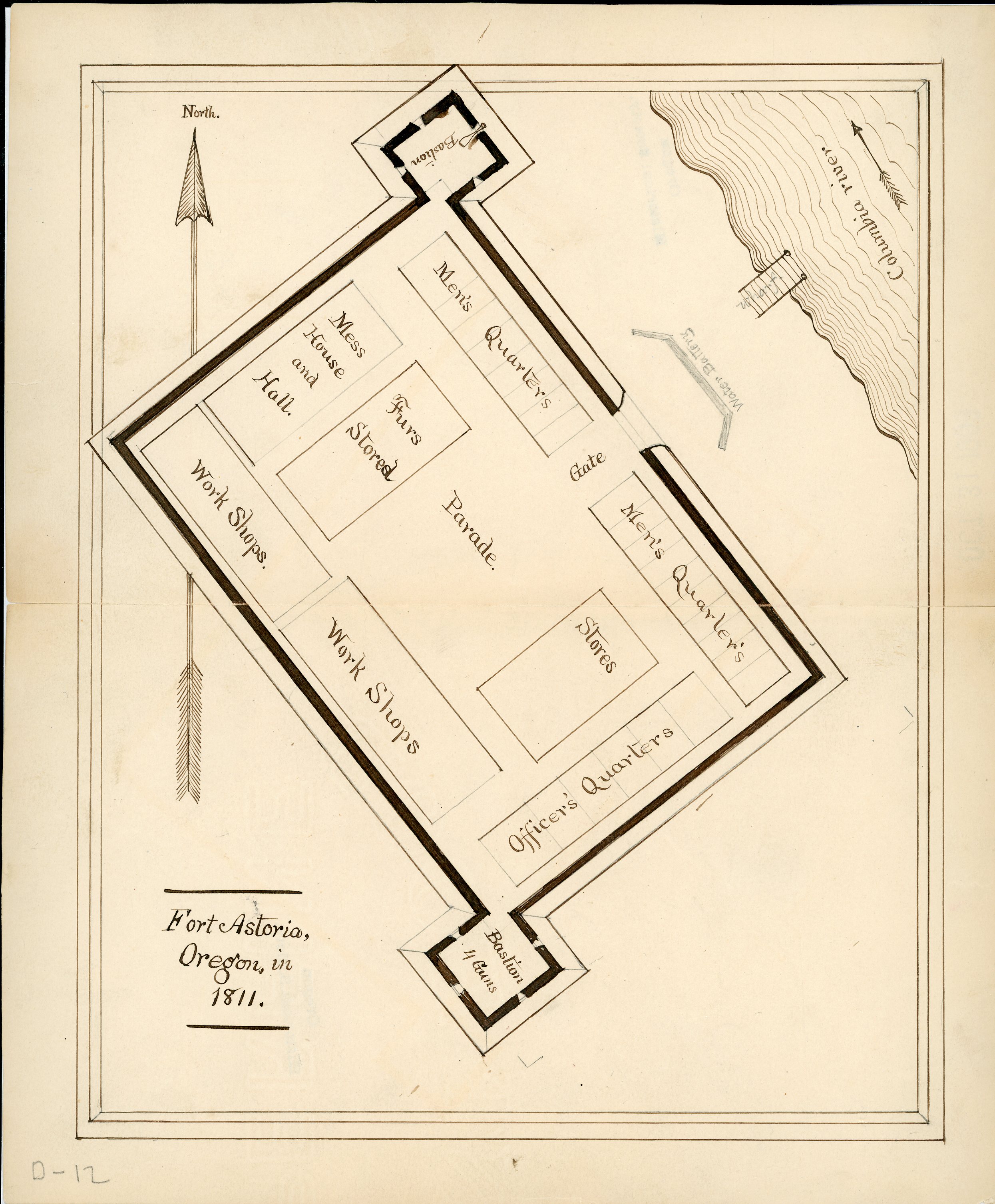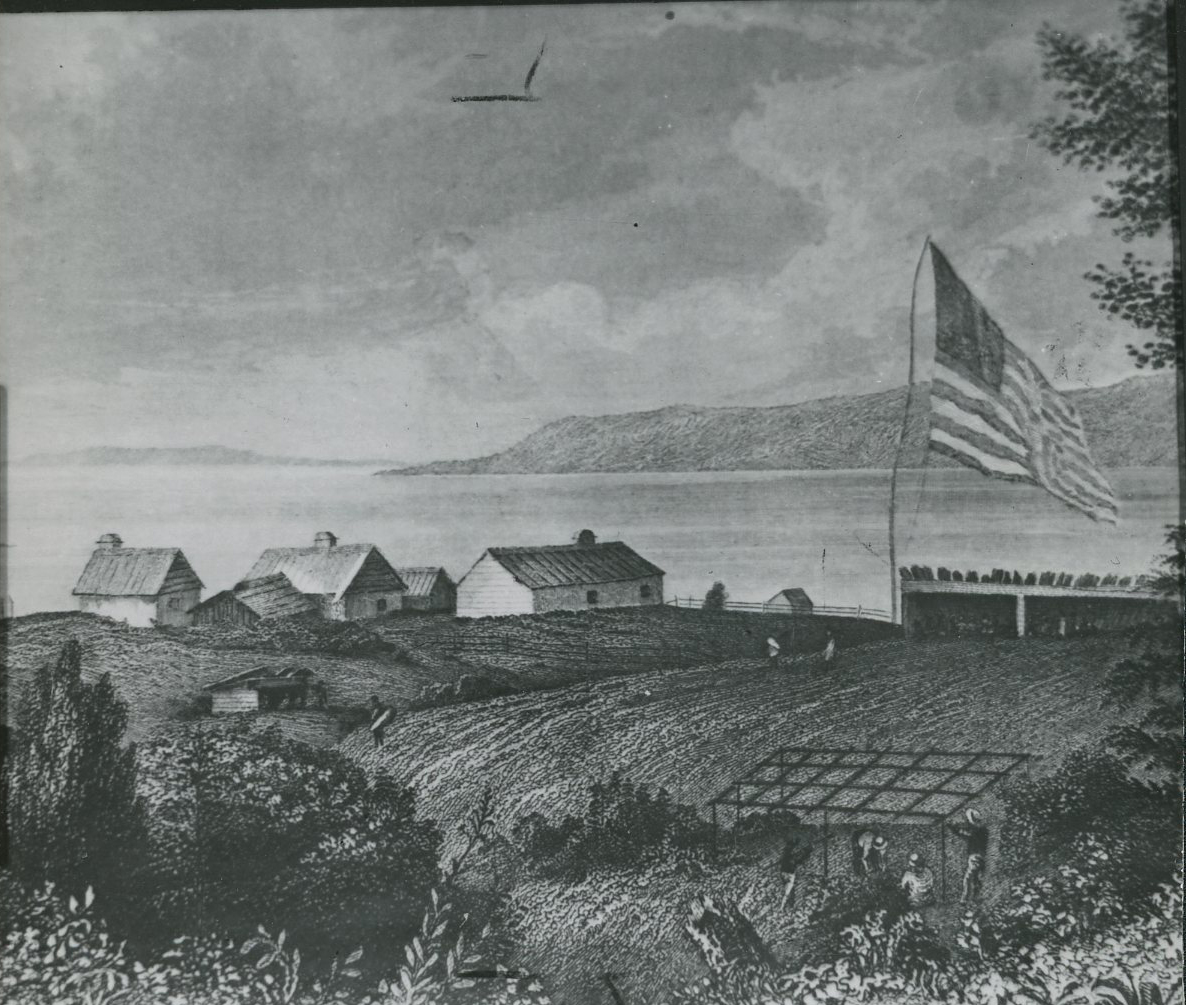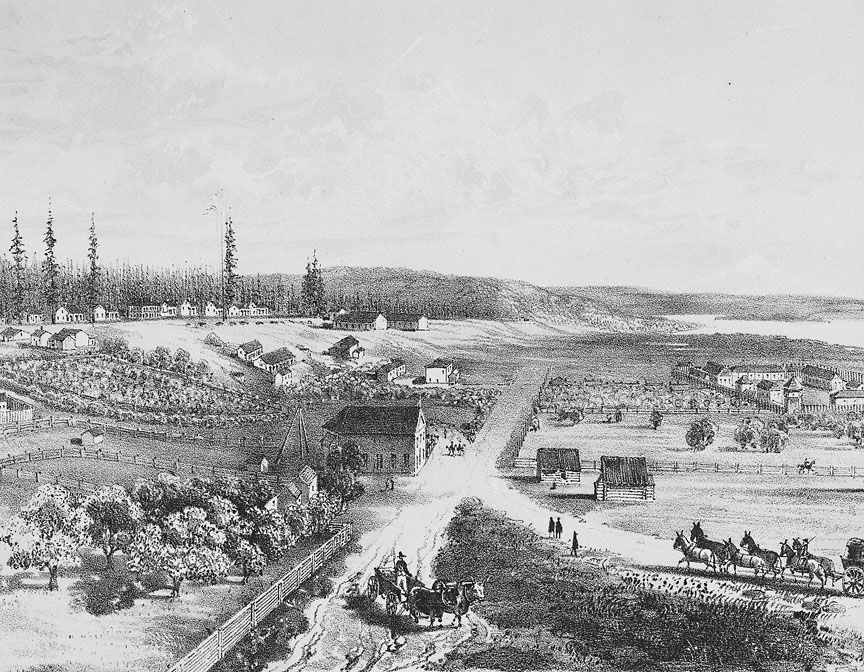John Jacob Astor never visited Oregon or the Pacific Northwest, but his investment in the region’s fur trade in the early nineteenth century left an important legacy. In 1810, Astor sent two expeditions representing his Pacific Fur Company, one by sea and one by land, to establish a fur post at the mouth of the Columbia River. By spring 1811, the Tonquin had anchored in the Columbia River estuary, after a difficult passage over the river’s ocean bar, and Astor’s men had built a storehouse at Fort Astoria, the first American settlement in the Oregon Country and the foundation for Oregon’s oldest continually occupied non-Indigenous community. The overland expedition, led by Wilson Price Hunt, arrived in February 1812.
Astor conceived the post as a terminus for a string of trading posts across western North America that would funnel furs for shipment to markets in China. Based at Fort Astoria, the Pacific Fur Company established several posts in the Columbia River Basin before the War of 1812 disrupted Astor’s grand plan. In the face of war in October 1813, the Pacific Fur Company sold Astoria to the North West Company. By terms of the Treaty of Ghent, which ended the war, Britain ended up with ownership of Astoria, which was renamed Fort George.
By 1821, Astor’s fur-trade embarcadero on the Columbia had become part of the sprawling Hudson’s Bay Company enterprise. Nonetheless, Fort Astoria signaled an American entrepreneurial and territorial interest in Oregon and added a minor argument for United States negotiators, who eventually succeeded in incorporating the Pacific Northwest into the nation by the Oregon Treaty of 1846 with Great Britain.
The Pacific Fur Company was but one of several fur-trading enterprises Astor created, including the American Fur Company, an economic powerhouse in the Missouri River trade during the 1820s and 1830s. In a letter to Meriwether Lewis in 1808, when Astor began planning his post on the Columbia, President Thomas Jefferson called Astor “a most excellent man . . . long engaged in the [fur] business & perfectly master of it.” According to historian James Ronda, he was “relentless in the pursuit of wealth” and a genius who “embraced business techniques far in advance of his contemporaries.”
Astor began his business career not long after his arrival in New York City, at age twenty-one, in 1784. Born in Waldorf in the German Palatinate into a middling family, he followed an elder brother to New York in pursuit of gain. He married Sarah Todd, from an established Dutch family, in 1785 and began a trading business, and his aggressive business style and ability to foresee trading opportunities led him to the fur trade. By the 1790s, his ability to manipulate trade relationships had brought success and wealth.
After being forced to abandon Astoria, Astor turned his attention to other investments, including real estate and the China trade, although he kept his interest in the fur trade through his American Fur Company, incorporated in 1808. His partners operated the Western Department of the American Fur Company into the upper Missouri River region. By 1834, he had pulled out of the fur business altogether and had sold the American Fur Company. He pursued real estate investments for the last decade and a half of his life. Astor died in 1848 with an estimated estate of $8 million (approximately $4 billion in 2016 dollars).
-
![]()
John Jacob Astor.
Courtesy Oregon Hist. Soc. Research Lib., orhi54
-
![Earliest known illustration of Fort Astoria, by Gabriel Franchere, employed by Astor,]()
Fort Astoria, 1813.
Earliest known illustration of Fort Astoria, by Gabriel Franchere, employed by Astor, Courtesy Oreg. Hist. Soc. Research Library, OrHi51
-
![Engraving of Tonquin crossing Columbia River bar, March 25 1811.]()
Tonquin crossing Columbia Bar, 1811, ba006960.
Engraving of Tonquin crossing Columbia River bar, March 25 1811. Oreg. Hist. Soc. Research Libr., ba006960
Related Entries
-
![Astor Expedition (1810-1813)]()
Astor Expedition (1810-1813)
The Astor Expedition was a grand, two-pronged mission, involving scores…
-
![Fort George (Fort Astoria)]()
Fort George (Fort Astoria)
Fort George was the British name for Fort Astoria, the fur post establi…
-
![Hudson's Bay Company]()
Hudson's Bay Company
Although a late arrival to the Oregon Country fur trade, for nearly two…
-
![Tonquin (ship)]()
Tonquin (ship)
The Tonquin, built in 1807, was described by Edmund Fanning, its builde…
Related Historical Records
Map This on the Oregon History WayFinder
The Oregon History Wayfinder is an interactive map that identifies significant places, people, and events in Oregon history.
Further Reading
Ronda, James. Astoria & Empire. Lincoln: University of Nebraska Press, 1984.
Jackson, Donald, ed. Letters of the Lewis and Clark Expedition. Vol. 2. Urbana: University of Illinois Press, 1979.
Haeger, John D. “Business Strategy and Practice in the Early Republic: John Jacob Astor and the American Fur Trade.” Western Historical Quarterly (May 1988): 192-99.

